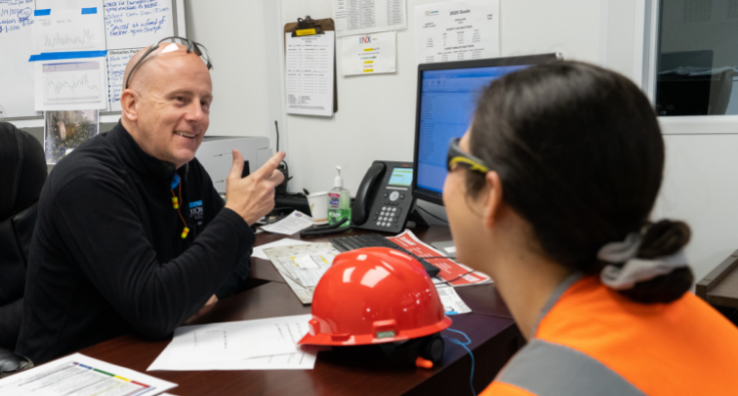The Art of Listening and Other Leadership Skills Employees Value

I read an article in EHS Today recently about employees who feel their companies don’t listen to them on issues like workplace safety. According to the story, 46% of management never, rarely, or only sometimes listens when frontline workers report safety issues.
That’s shocking, in my opinion. And it demonstrates the need for employers to set up processes and policies to help employees communicate safety and health issues, which we help many clients do. But it also highlights the importance for supervisors and frontline managers to actively listen to their employees on a broader level.
At a time of massive labor shortages, companies need more than pay hikes, bonuses, and perks to hire and retain workers. They have to create an environment where employees feel included and valued. And that can only happen when you train their supervisors and management on leadership skills like the art of active listening.
Back in my day as a quality assurance manager at a production plant, I remember rewarding an employee with a surprise day off, only to find that it was the last thing he wanted. Unbeknownst to me, his mother-in-law lived with them and, frankly, he would rather work than spend time around her. That’s something I would have only known if I had taken the time to talk and listen to him on a regular basis.
Employers have to understand that not everyone is born a leader. And not everyone is gifted with the art of empathy and the ability to listen. That’s why it’s important to teach that as part of their leadership training. Your supervisors and frontline management might make the difference between whether or not employees want to stay or leave their jobs.
Everybody wants to feel like they do a good job every day. And who is the most immediate reinforcer? It’s their frontline supervisor or their management. So, it’s critical to make sure they know how to listen, encourage and motivate their employees. And they need to be able to do this across generational lines, whether it’s Boomers, Gen-X, Millennials, or Gen-Z.
Here are some related areas we teach as part of our leadership training.
Start with the Basics
What we like to do in our training sessions is to teach the basics of active listening, which is so vital for every employee, including the complainers. You have to listen and decipher what they’re saying and then turn that into something actionable. We also talk about the importance of following through on those conversations so employees see that you care enough to act on their concerns or questions.
As part of our leadership training, we also cover topics like delegating. We frequently hear that employees like to feel like they’re empowered. There’s no better way to empower someone than by delegating something to them and following up to make sure they’re successful.
Understand and Value Diversity
Helping employees feel included means understanding their backgrounds and cultures, which requires listening. In manufacturing plants where there are different cultures or ethnicities, it’s essential for supervisors to understand what drives and motivates employees before and after work. We’re all different, but together we’re all smarter than we are by ourselves. And so, it’s all about accepting and valuing what makes us different.
Share the Big Picture
As you guide new employees through your onboarding process, explain their role as it fits into your company’s overall operations and goals. This is a great way to help them understand the importance of their job and their role in the company’s overall success. It also provides an opportunity for them to ask questions. Also, during this time, explain the company’s culture and how they can be a part of it and help shape it moving forward.
Know When to Back Off
Part of communicating involves knowing when to stop talking and give others space. Not all employees are comfortable with face-to-face meetings and being asked questions in a crowd. So, it’s important to know how employees like to communicate. This might involve email vs. direct conversations.
In addition to the points described above, our leadership training includes a variety of other topics such like:
- Anger Management – to help supervisors defuse tense situations.
- Dealing with Difficult People – to help derail negativity and address complaints.
- Disciplinary Action – to respond to issues positively and constructively.
- Performance Evaluations – to properly and constructively review past performance and provide positive reinforcement and constructive feedback.
All of these areas are needed to create that environment where employees can perform to their greatest potential and feel comfortable reporting safety issues, knowing that someone cares enough to listen to them. The relationship and trust that ensues might even outweigh the latest perks and dollars offered by the other manufacturer down the road.
What leadership development training has worked or not worked for you? Please let us know in the comments. Contact us if you want to learn more about the Alchemy of Leadership training program.





